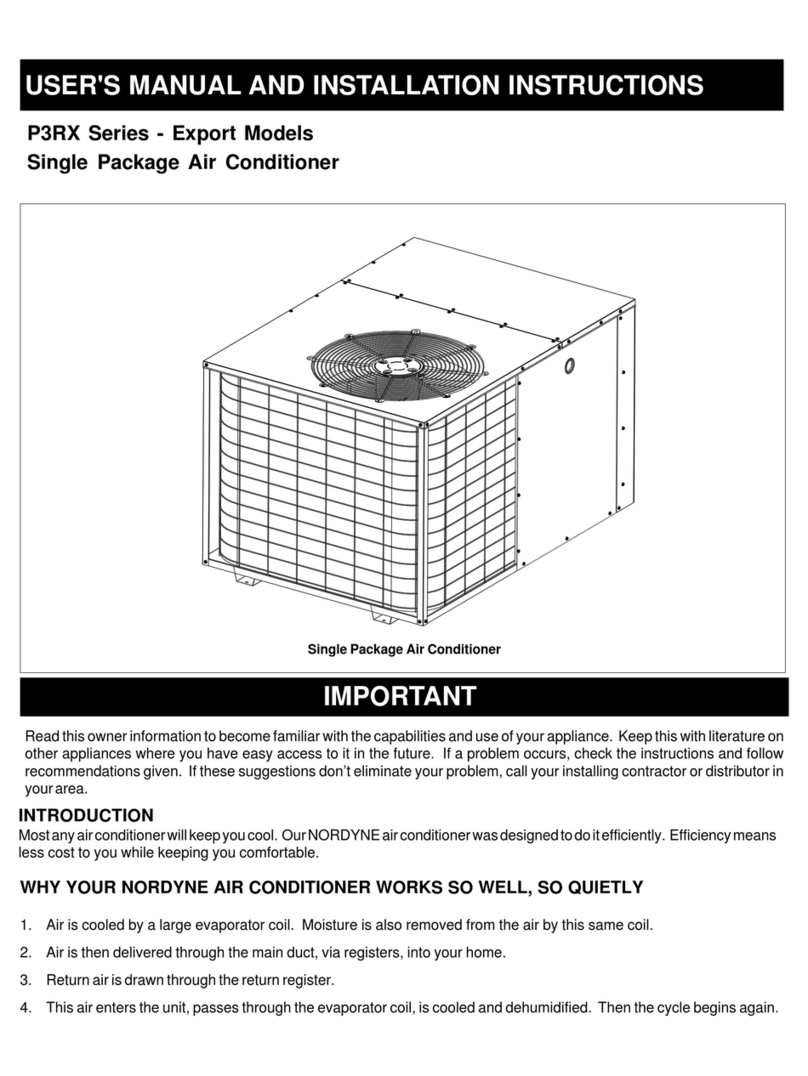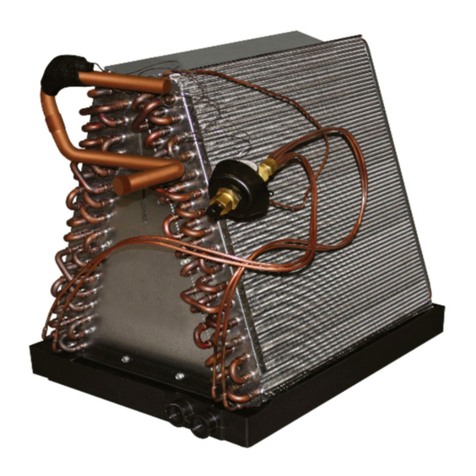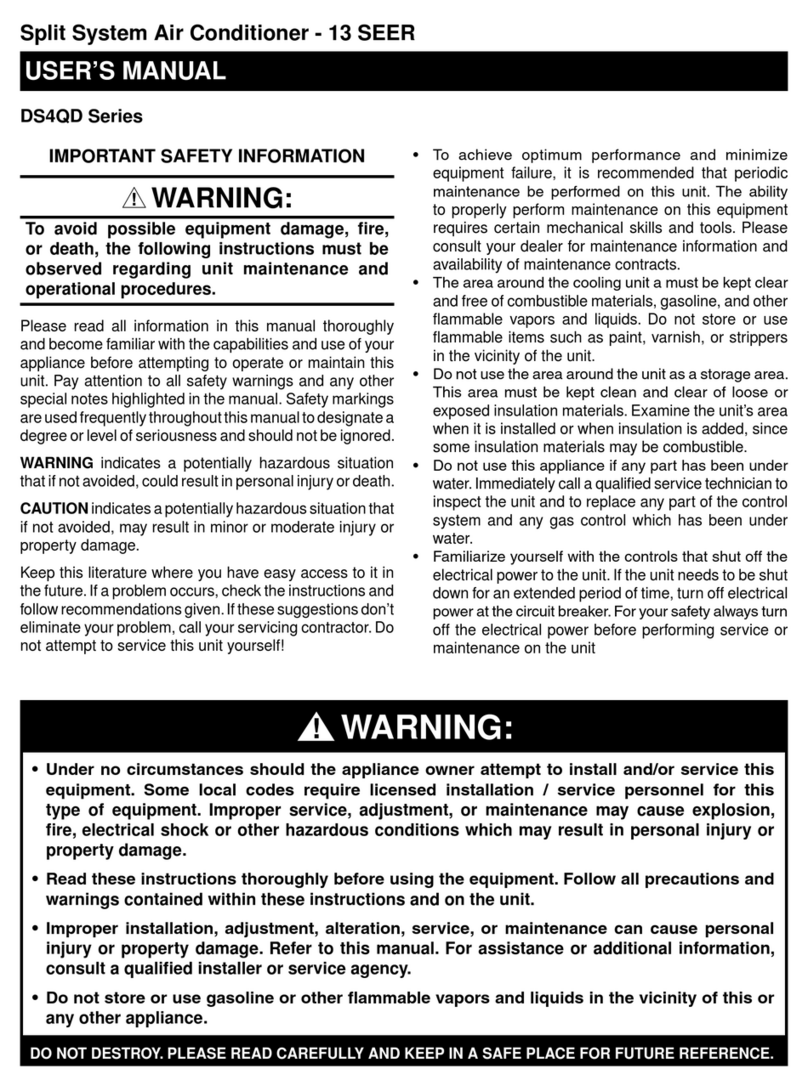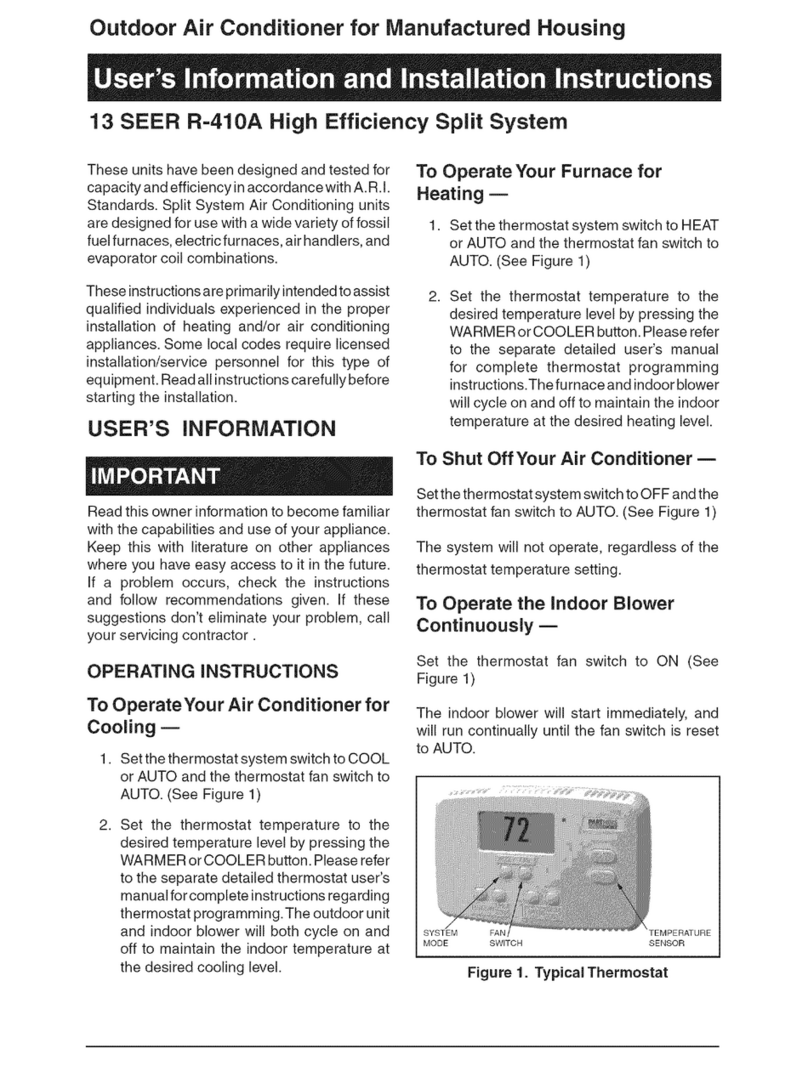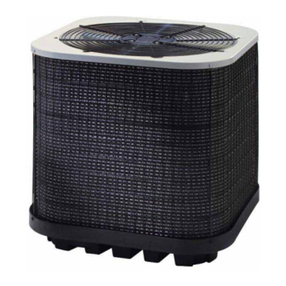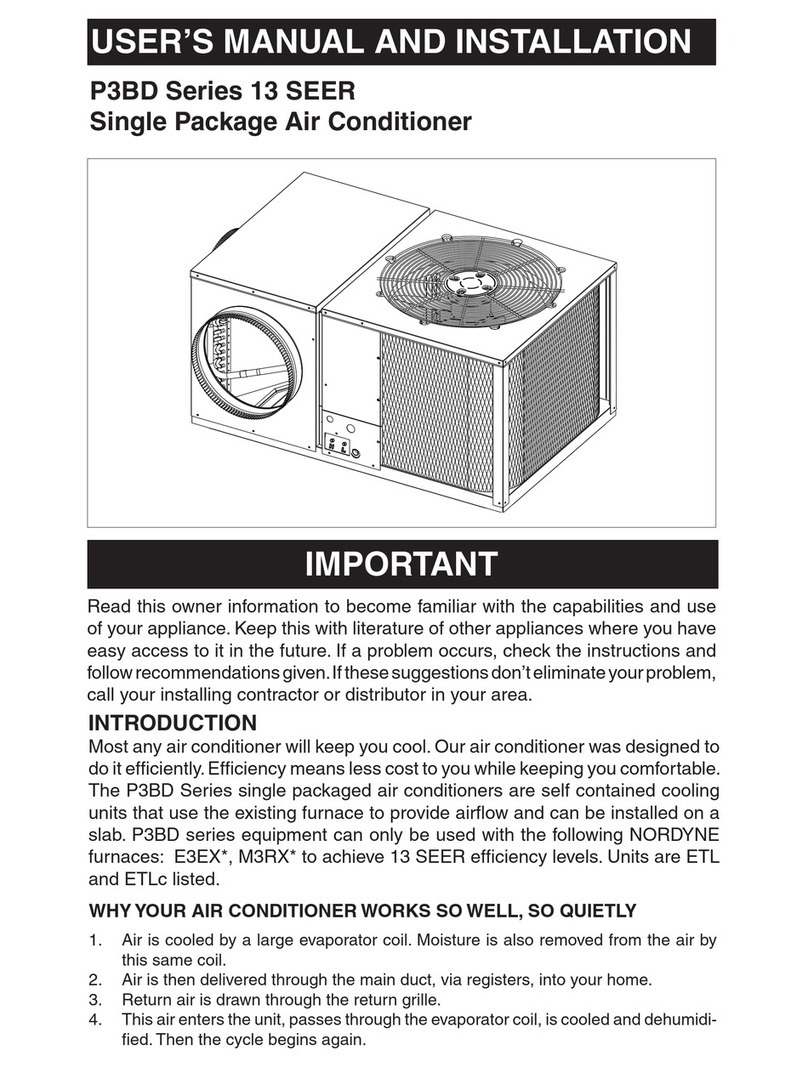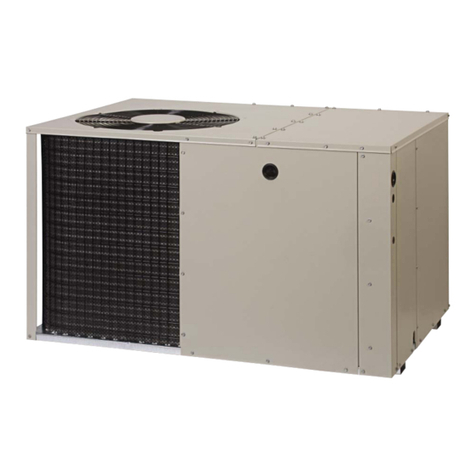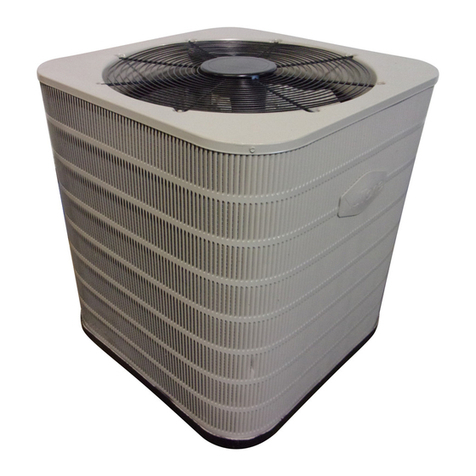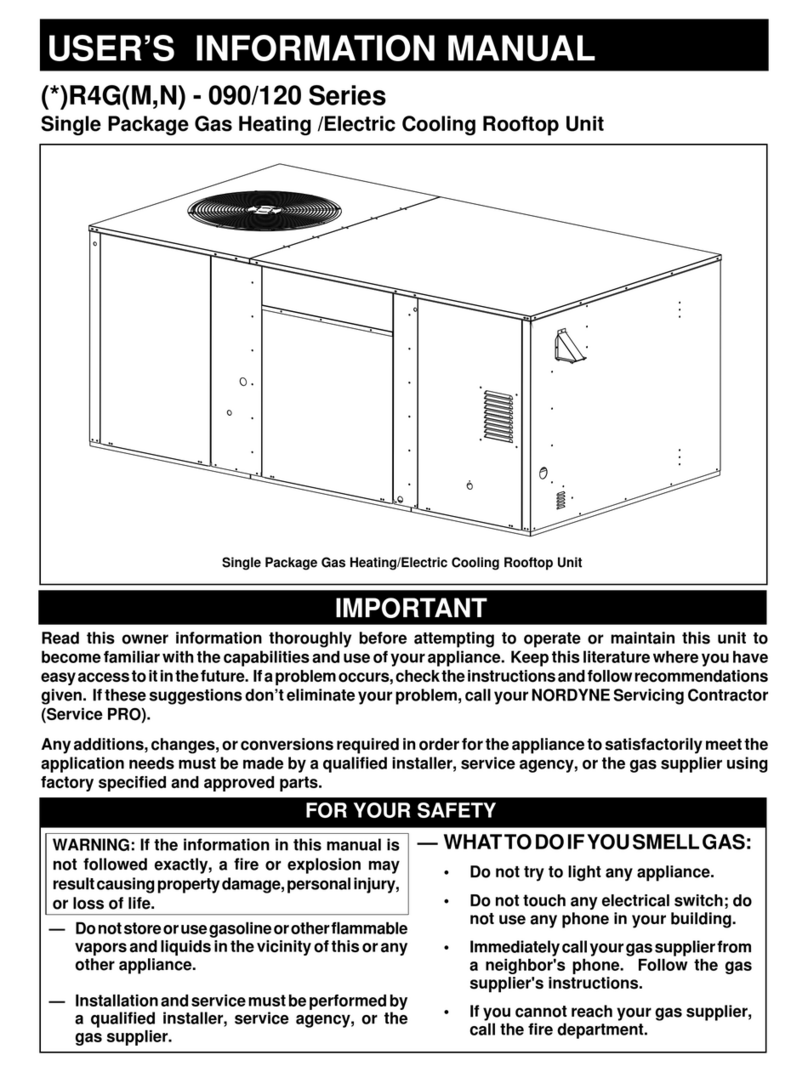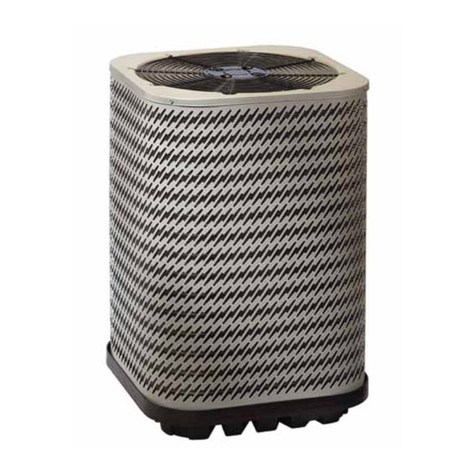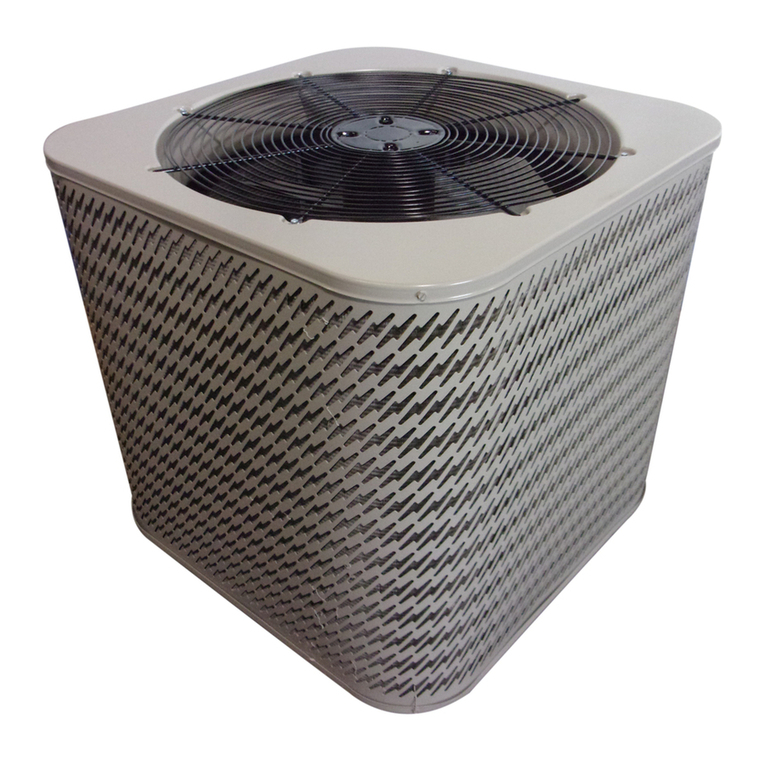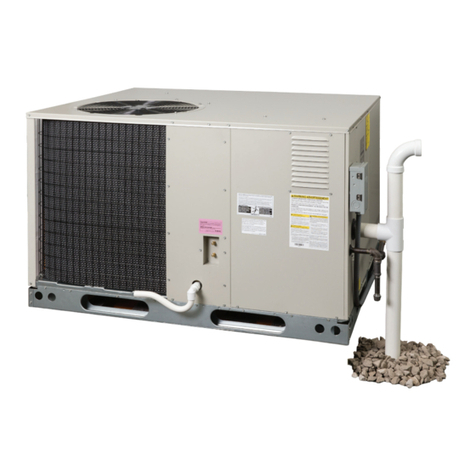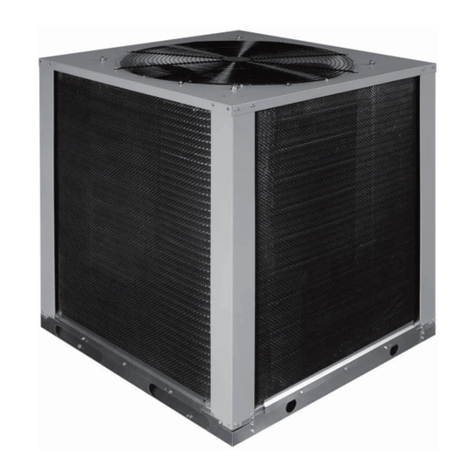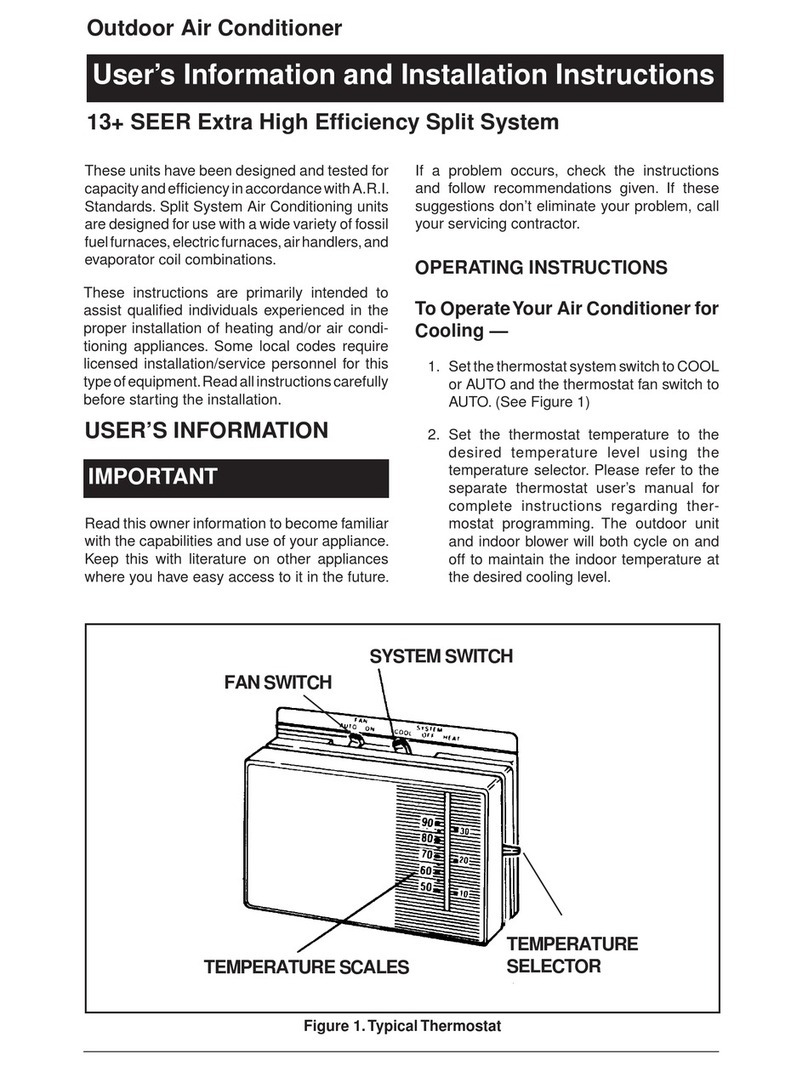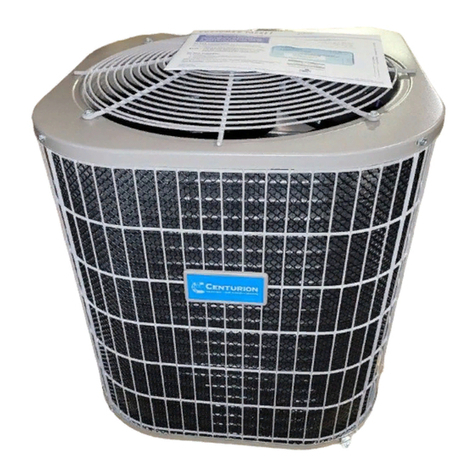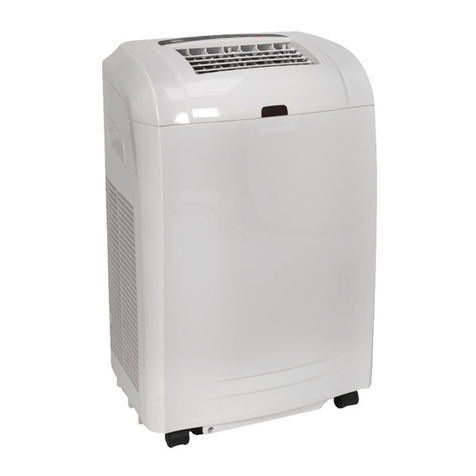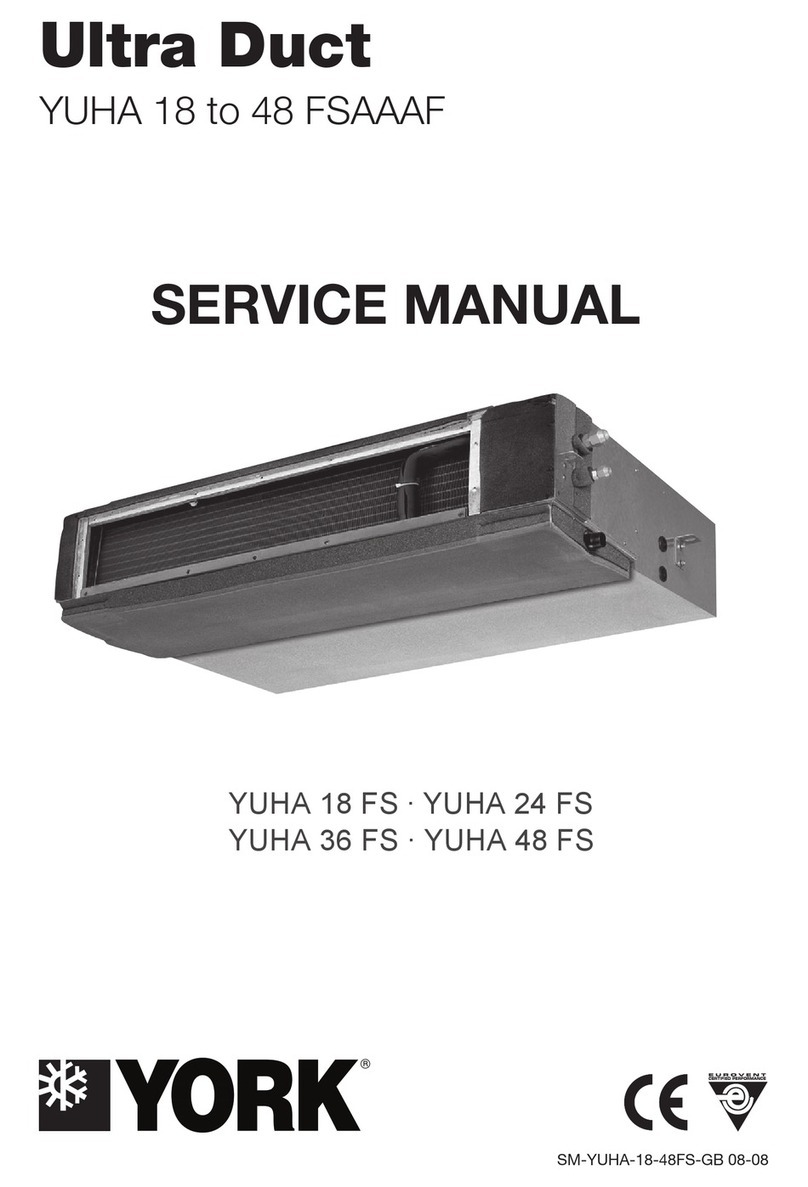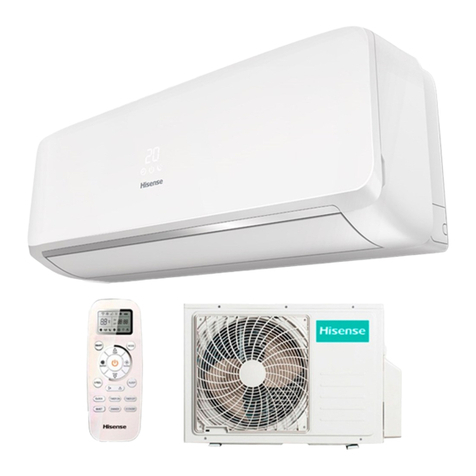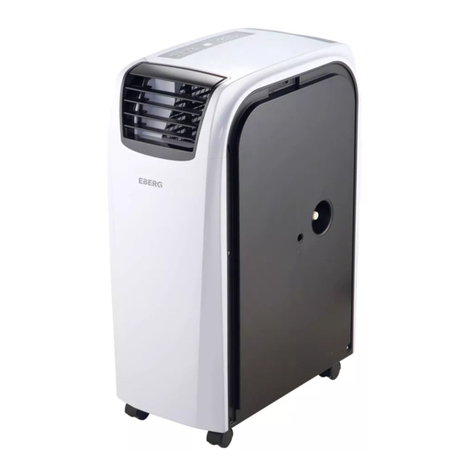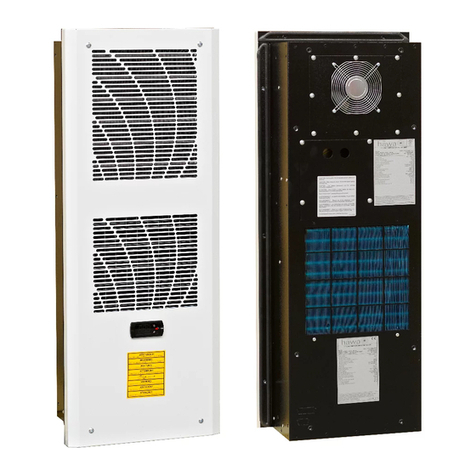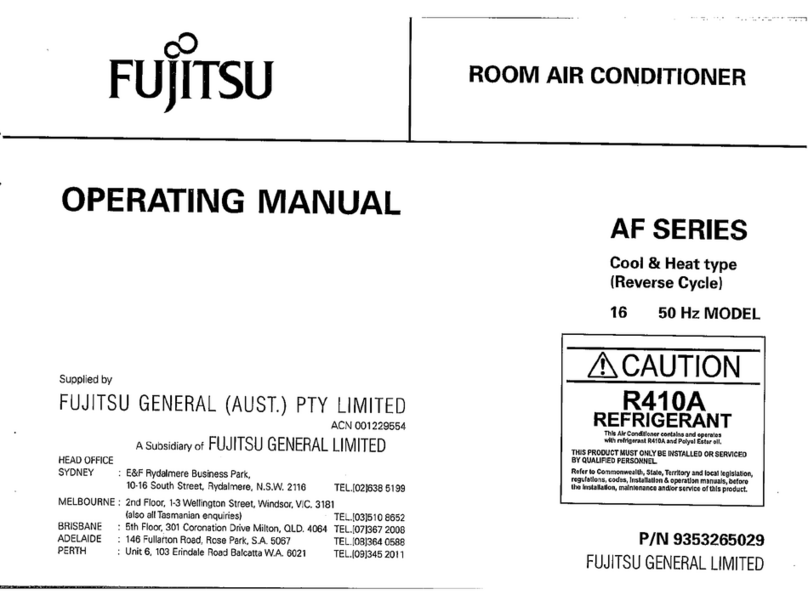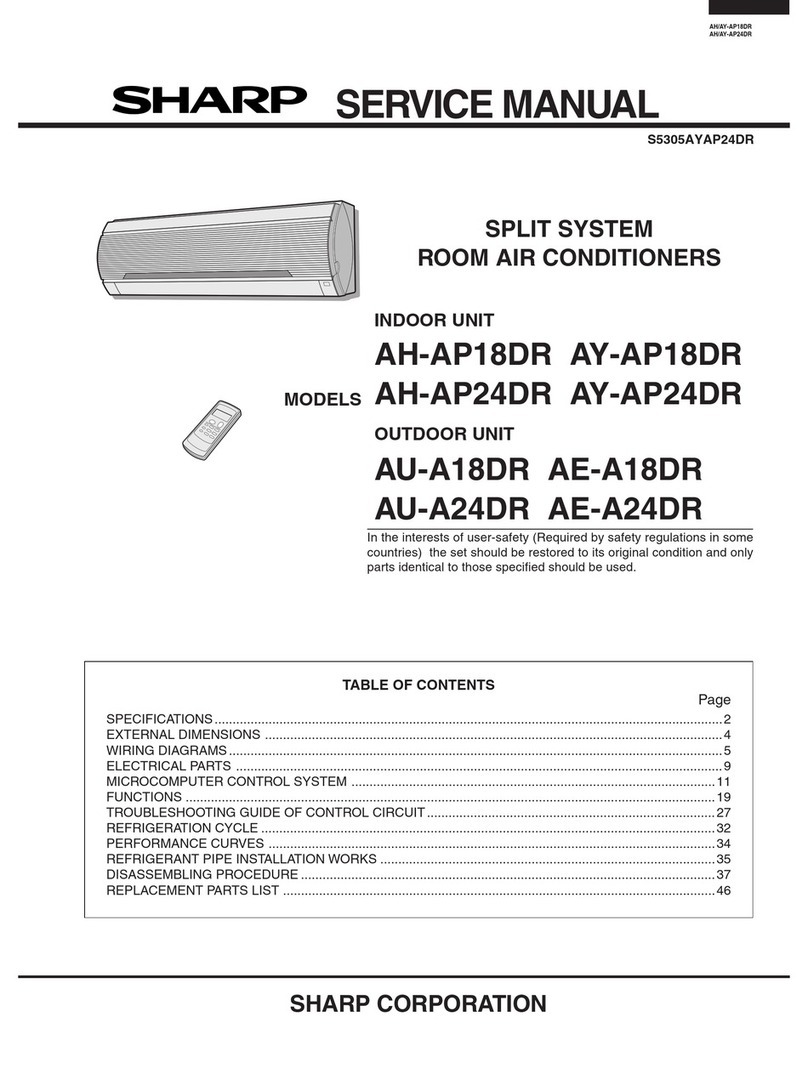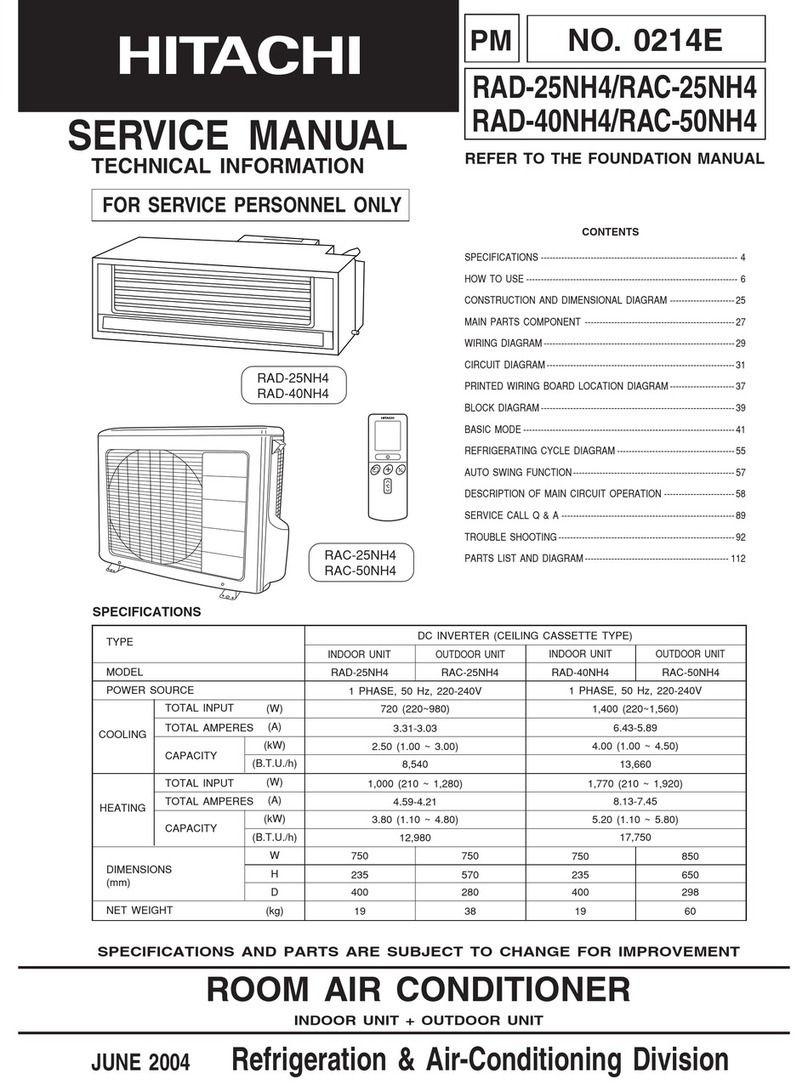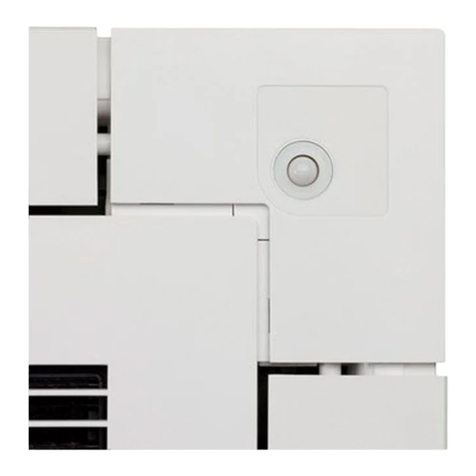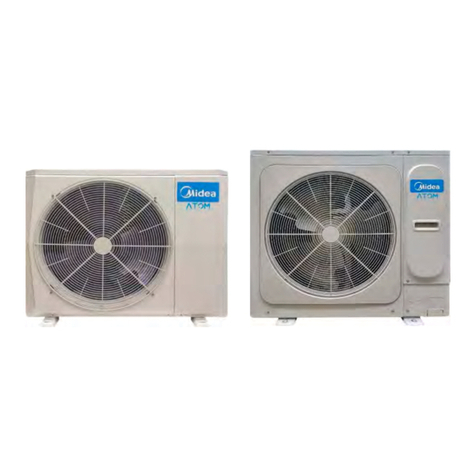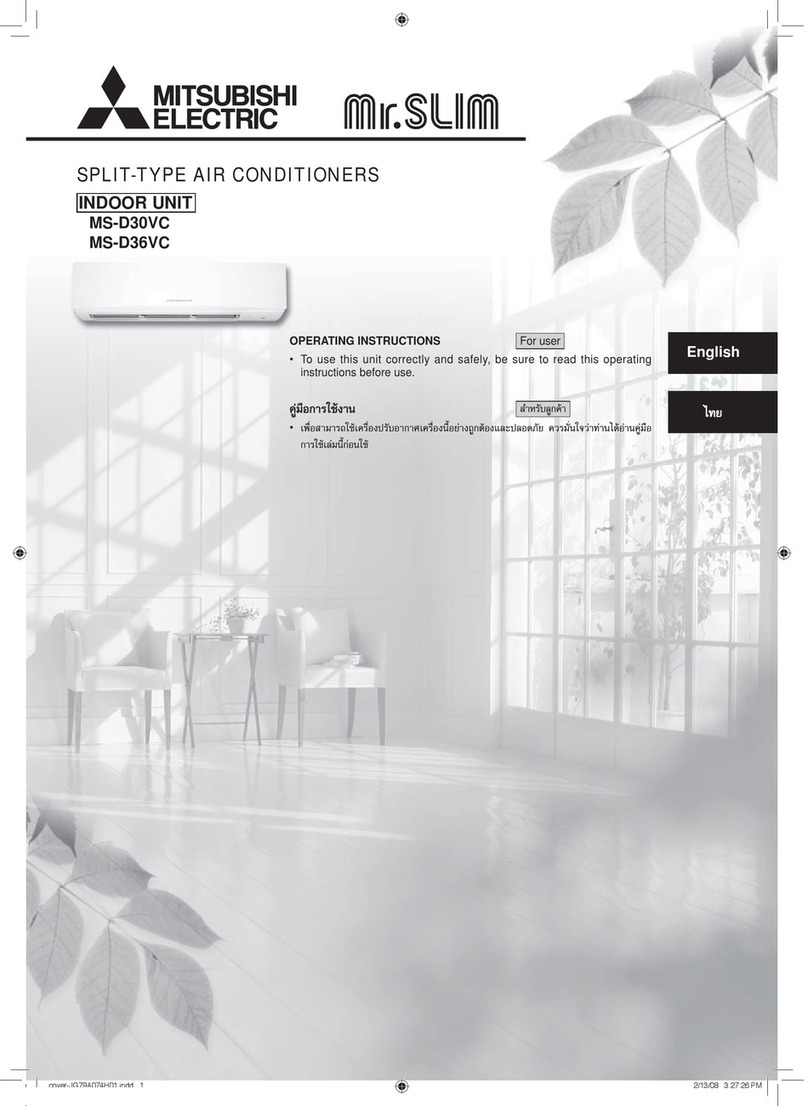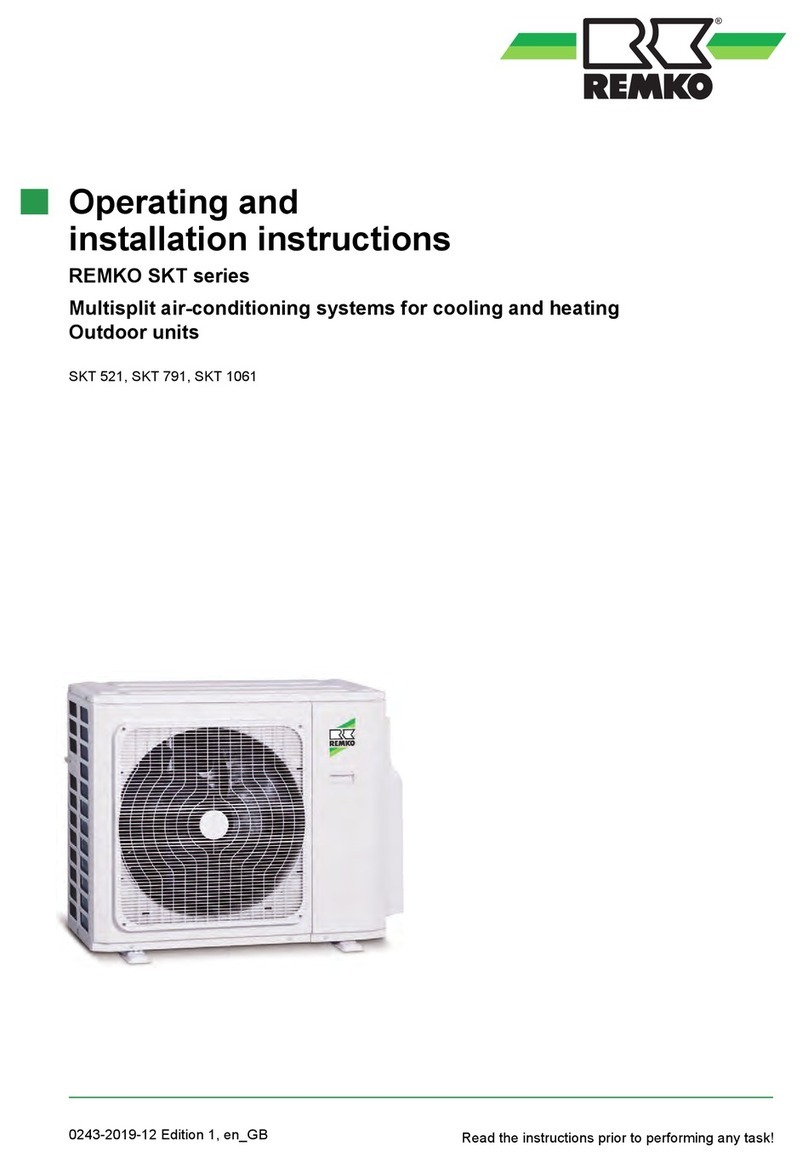ELECTRICAL CON NECTIONS
1. ELECTRICAL SERVICE
High Voltage
a. Install a branch circuit disconnect of ad-
equate size per NEC. Locate the discon-
nect within sight of the unit.
b. Extend leads through power wiring hole
provided. Connect L1 and L2 directly to the
contactor. (See Figure 9).
c. Ground the air conditioning unit using the
green grounding screw provided in the
control panel.
Low Voltage
a. Route 24v control wires through the seal-
ing grommet near the power entrance.
b. Connect the control wires to the leads in the
low voltage area. (See Figure 10).
2. OVERCURRENT PROTECTION
In general, the best fuse or breaker for any air
conditioner is the smallest size that will permit
the equipment to run under normal use and
service without nuisance trips. Such a device,
sized properly, gives maximum equipment pro-
tection. The principal reason for specifying a
time delay type is to prevent nuisance trips
when the unit starts.
In the event that a fuse does blow or a breaker
trips, always determine the reason. Do not
arbitrarily put in a larger fuse or breaker and do
not, in any case, exceed the maximum size
listed on the data label of the unit.
3. LOCATING THE THERMOSTAT
Locate the thermostat away from drafts and
slamming doors and place it where there is a
free flow of air. Mount on an inside wall approxi-
mately five feet from the floor.
Do not locate near a lamp, kitchen range, direct
sunlight, or in line with air flow from supply
registers.
a. Connect Cooling Thermostat: The
cooling thermostat available for use with
this system is equipped with a selector
switch. To shut down the air conditioner,
set the selector switch to the OFF position.
Connect the red and yellow wires from the
unit to the R and Y terminals respectively
on the thermostat subbase. Connect the
green wire to the yellow wire atthe unit. See
the instruction sheet packed with the ther-
mostat for detailed methods of mounting.
Note: The cooling-only thermostat must
be connected to an interlock switch to
prevent simultaneous operation of the fur-
nace and the air conditioner. (See Figure 1,
Page 2.)
b, Connect the Heat-Cool Thermostat:
The heat-cool thermostat is equipped with
asystem HEAT-COOL switch, which pro-
vides a positive means ofpreventingsimul-
taneous operation of the heating and cool-
ing units. The thermostat is also equipped
with an ON-AUTO fan switch which allows
the home owner to operate the indoor
blower when air circulation is desired.
Connect the red, yellow, green and brown
tow voltage wires to the R or RC, Y, G and
W terminals respectively on the thermo-
stat base. The black wire is the 24 volt
common required on some thermostats.
See thermostat instruction sheet for more
detailed information.
Refer to furnace installationinstructionsfor
required connections and proper heat an-
ticipator setting when installing unit with an
external furnace.
Co If two stage heating is desired, an
optional outdoor thermostat may be
installed: Connect the thermostat to the
orange lowvoltage wire and the W terminal
on the indoorthermostat base (See Figure
10). See the thermostat instructions for
details on setting the outdoor thermostat.
4, ELECTRIC HEAT PACKAGE (OP-
TIONAL)
The air conditioner is shipped without an aux-
iliary electric heat kit installed. If electric heat is
desired, an accessory Heater Kit must be field
installed. See Specifications Sheet for available
kits and their applications.
Select the correct size heat package for
the installation.
8
















